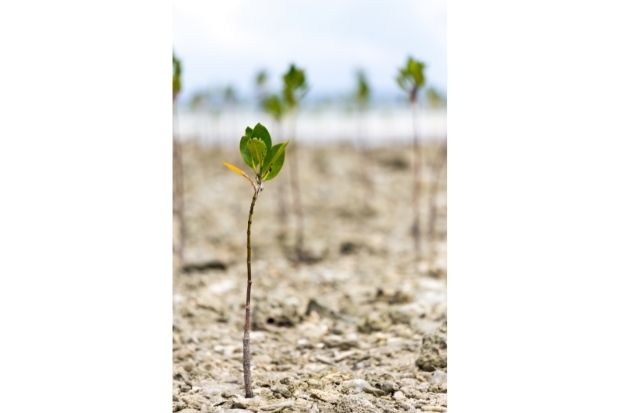LUCENA CITY – The LGBTQ (lesbian, gay, bisexual, transgender, and queer) community in General Luna town in Quezon province initiated a mangrove and coastal clean-up activity along the shore of Tayabas Bay to celebrate Pride Month.
“The environmental protection activity is their way of celebrating Pride Month,” Mayor Matt Erwin Florido said in an online interview Saturday.
Florido said local government officials, policemen, firemen, community environment and natural resources office, the Tau Gamma Phi fraternity, and other volunteers joined the more than 60 members of the local LGBTQ community in planting more than 1,000 mangrove propagules along the coast of Barangay Sta. Maria Ibaba on Saturday morning.
The participants also conducted a coastal clean-up activity along the shores of the bay in the afternoon.
“Sumasaludo po tayo sa gawaing ito na pinangunahan ng Bahaghari ng Heneral. Sa lahat po ng members, maraming maraming salamat po sa inyong malasakit sa ating Inang Kalikasan (We appreciate this gesture that was initiated by Bahaghari ng Heneral. To all the members, thank you for your compassion for Mother Nature),” Florido said on his Facebook post.
The LBGTQ mangrove planters called themselves “bahaghari ng heneral” (the rainbow of the general), referring to Antonio Luna, a general of the revolutionary movement against Spanish colonizers for which the town was named after. “Bahaghari” refers to the rainbow flag that symbolizes the LGBTQ rights movement around the globe.
June marks Pride Month, a celebration of the LGBTQ community and the fight for their rights. The celebration has its roots in New York City in 1969 when a riot broke out throughout the city after the police raided a gay club called the Stonewall Inn.
Mangrove forests, also known as the “rainforests of the sea,” are an important part of the marine ecosystem as the roots of the trees provide shelter for marine life while their fallen leaves become feed for fish and other marine animals. Mangroves are also key flood-prevention natural structures.
